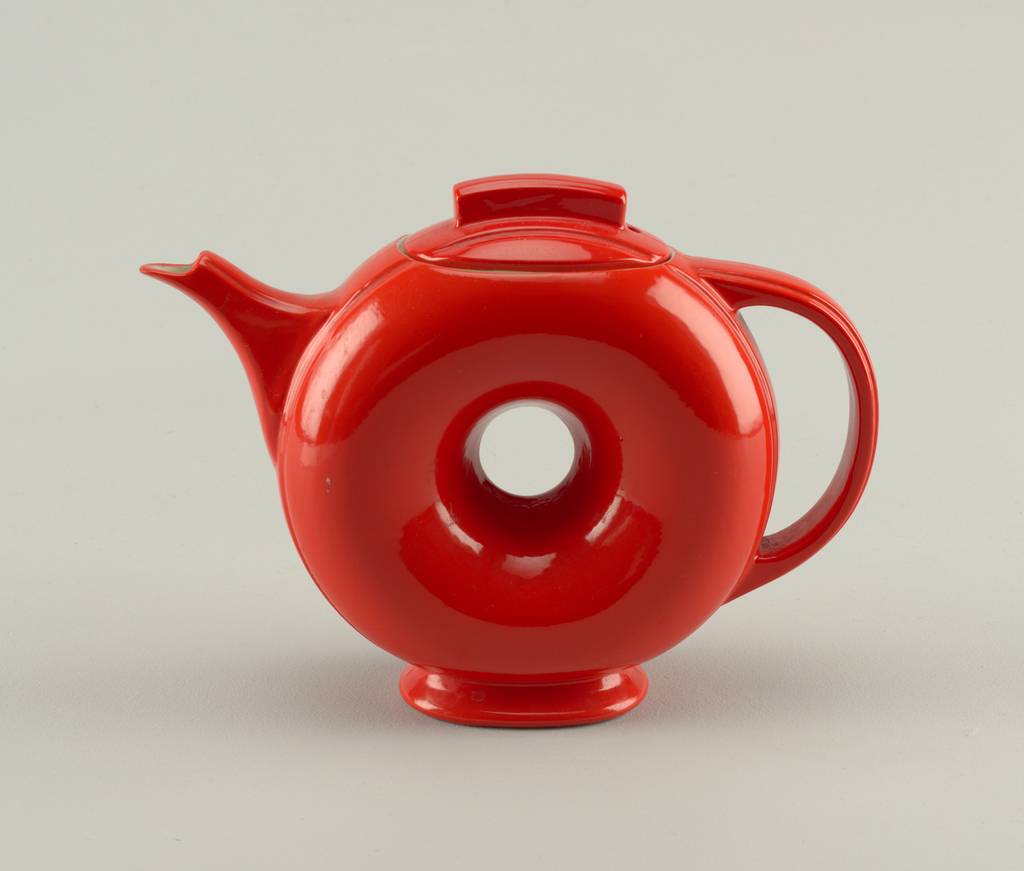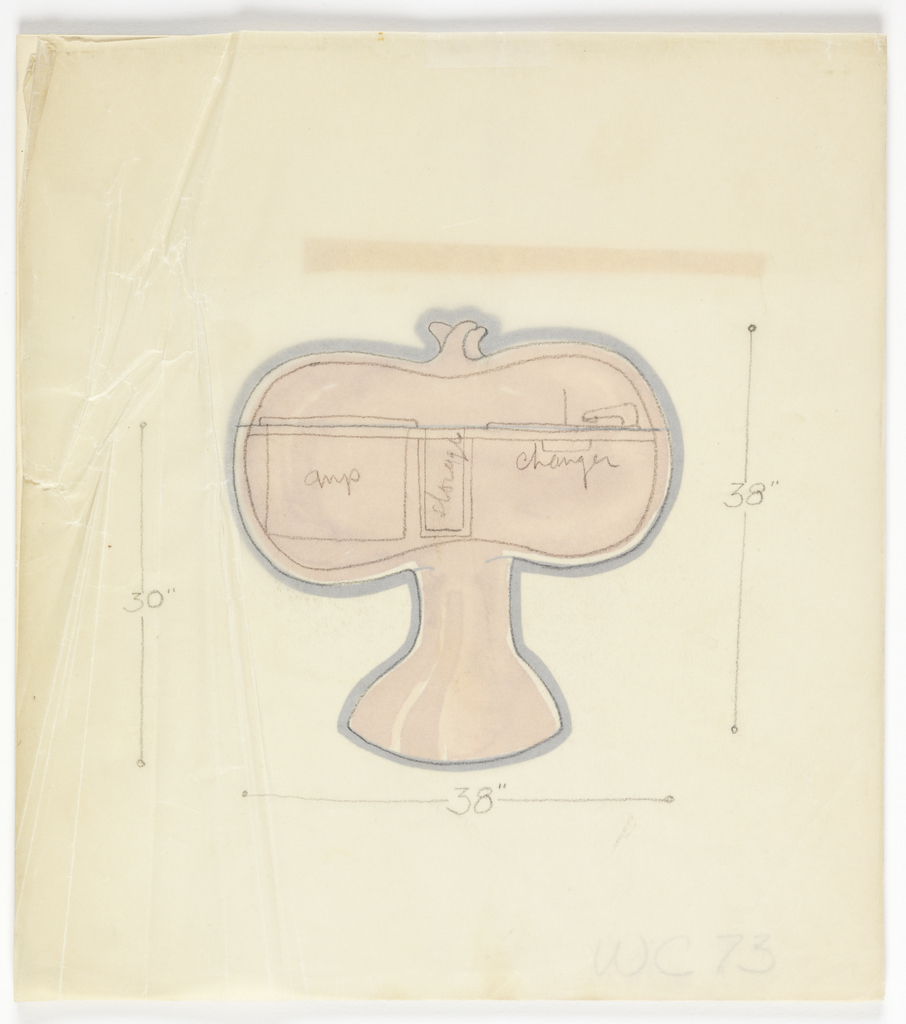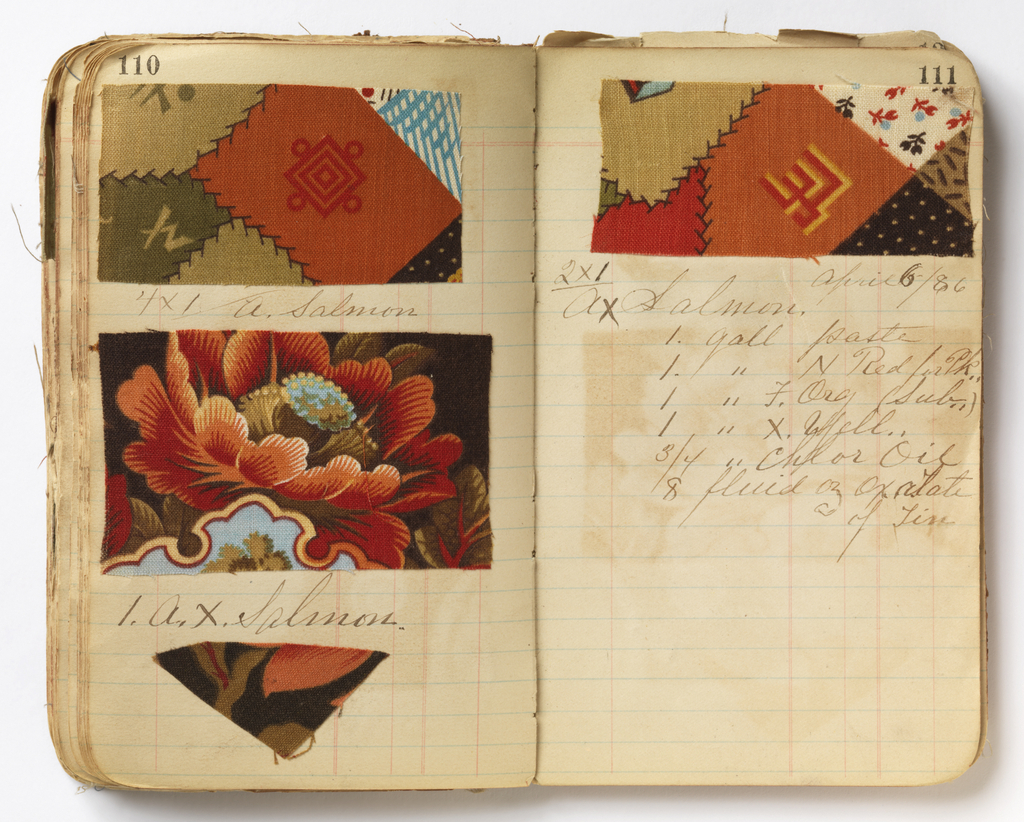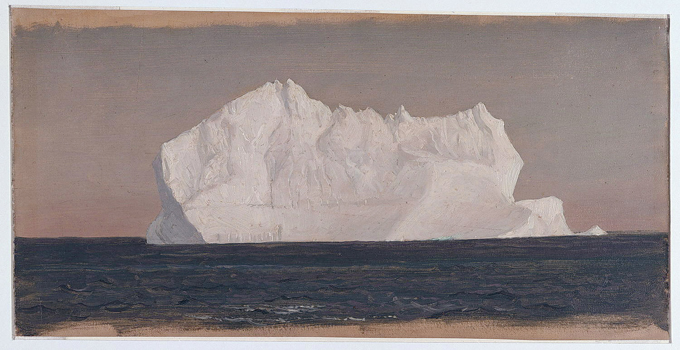George Nelson and his team at George Nelson Associates were the creative force behind many iconic mid-century furniture designs—such as the “Marshmallow” sofa and various storage systems—but it is in the company’s playful clock designs of the 1950s and 1960s that the whimsy of mid-century modern design excels. The Asterisk wall clock’s simple design relates...
Conjuring up the round abstract shapes and bold colors of Alexander Calder’s hanging mobiles and graphic work, this teapot’s unique shape stands out amongst many of the teapots created by the Hall China Company during the 1930s and 1940s. Making its debut in 1938, the Doughnut teapot was one of several novelty designs created by...
This chest, by twentieth-century American designer/craftsman Wendell Castle is an outstanding example of the American studio furniture movement. Commissioned as a stereo cabinet, it is a variant of a blanket chest he crafted in 1968 that is now housed in the collection of the Memorial Art Gallery, University of Rochester, Rochester, New York. Castle’s work is...
While researching one of our printer-dyer record books for the Cooper-Hewitt exhibition Multiple Choice: From Sample to Product, I discovered a curious fabric swatch on page 105. The fragment shows two incomplete figures in Japanese-style dress and includes the text “Dude Never Would Be Missed” and “Got Him On My List.” Both phrases are lyrics...
The Lindy Hop was a swing dance phenomenon, but the Finnish Hop? This lively design was produced by the artists’ collective know as The Folly Cove Designers, for its location near Gloucester on the Massachusetts coast. Many Finnish immigrants had settled there, attracted by skilled work in the granite quarries or the boat building industry....
Frederic Edwin Church, Sunset across the Hudson Valley, 1870. object number 1917-4-582-a Cooper-Hewitt, National Design Museum’s collection of over 2,000 oil sketches and graphite drawings by Frederic Church was mentioned recently in the New York Times in connection with the reopening of the Metropolitan Museum of Art’s American Wing. According to the Met’s Curator of...
In conjunction with a celebration marking the 60th anniversary of Heath Ceramics noted author and ceramic arts historian Garth Clark lectures on the early California pottery movement, its significance and its future through historic potteries. Design critic and author Amos Klausner introduces his new book HEATH CERAMICS: THE COMPLEXITY OF SIMPLICITY, (Chronicle Books) and leads...
The final grand challenge posed by Secretary Wayne Clough for the new strategic plan of the Smithsonian is explained by the sentence: “America is an increasingly diverse society that shares a history, ideals, and an indomitable, innovative spirit. We will use our resources across disciplines to explore what it means to be an American and...
I had the pleasure of meeting recently with Ton Vriens, a Dutch documentary filmmaker and journalist who, through his foundation Turtle Tree, is working with women in Haiti to develop a felt-making co-operative, with the goal of achieving economic and social independence for the members of the self-governed group. Haiti is one of the poorest...








